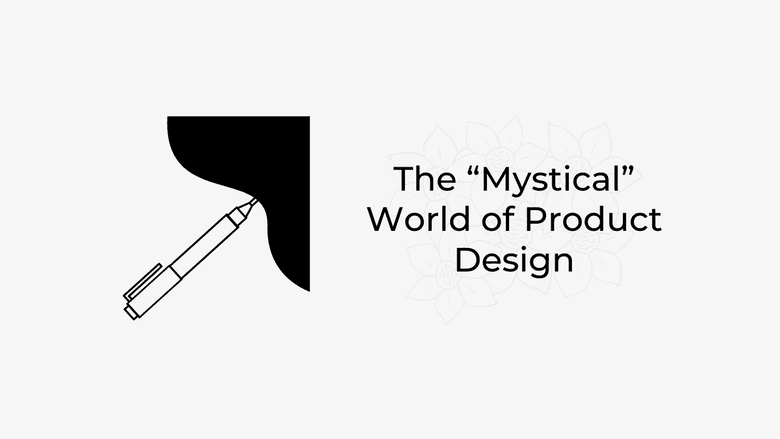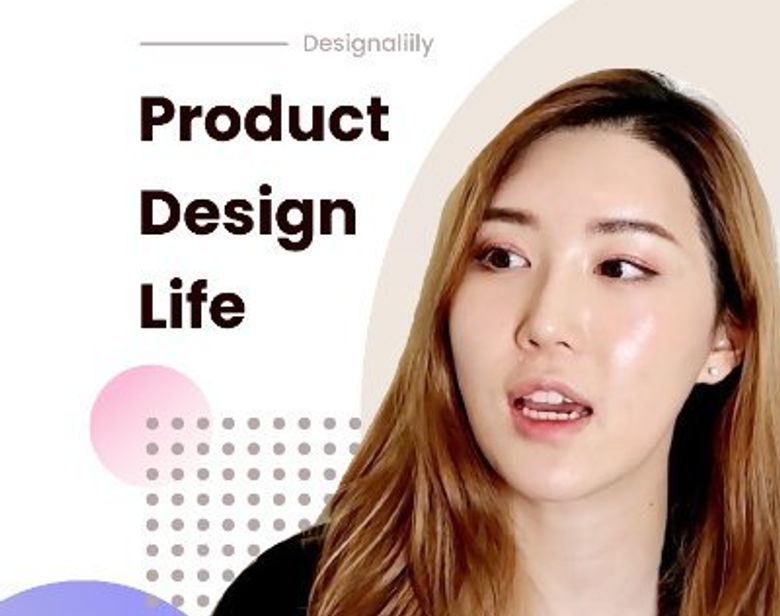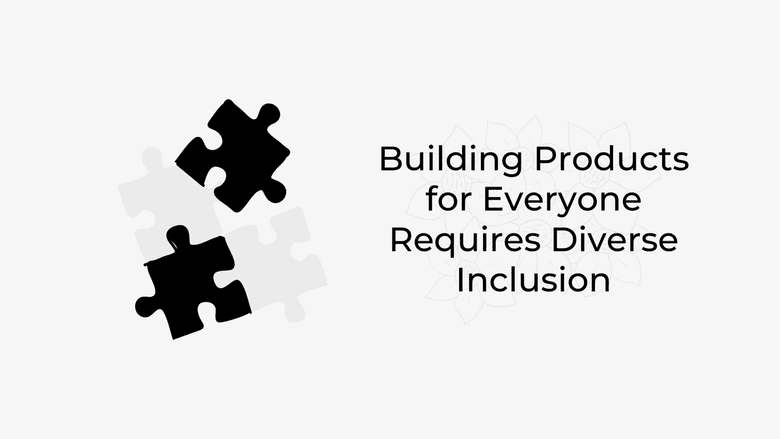Designalily: Product Designer on a Mission to Grow the Field
Lily Li has a cult following on TikTok and an important message for her viewers.

Lily Li stumbled into the field of product design. Even though she didn’t learn about product design until her college years, she was fascinated with people’s emotional experience with products from a young age.

“At a young age, I really liked to draw and create different comics or stories for people to read and see their reaction and how they feel about something I made. I think that carried on into my work,” said Li
As a student at Virginia Commonwealth University, Li pursued communication arts and design. Outside of class, she found an increasing curiosity about apps like Snapchat and Facebook because of their commonplace on campus.
“Everyone was using those products, and for some reason no one ever thought about designing them, or how they were created. I went to school in Virginia at an art school and [tech] just was so far away from our world.”
Li said the world of app creation was “mystical,” and while not many of her peers wondered about this, she was so intrigued that she started doing online research about it. She watched Pablo Stanley tutorials on YouTube, which walk viewers through the graphics editor app, Sketch. Through these tutorials and other research, Li said she learned about user experience (UX) and product design and simultaneously started to dabble in the field.
As a product designer, Li works end-to-end on projects that address problems brought to them by product managers.
To design the best product, Li considers a specific group of users and how they think, how they user will navigate a space and how to build or design a product for the user. She said work on a project typically involves doing initial research, then designing prototypes, for an app as a whole or for individual features.

“Designers are like the blueprint planners and engineers are like the construction.”
Li said her introduction to the field is not unusual because product design, and app design in general, is relatively new. In fact, Li described it as the “wild west of design.” Following some work in Washington D.C., Li decided to move to San Francisco knowing the city was a hub for product design.
She most recently worked as a product designer for Zendrive, a company dedicated to making roads safer by creating apps and analyzing data. She, specifically, worked on the collision detection, onboarding and mobile design standards for their Copilot app.
Li currently works as a consultant for Key Ring, an app that works to create a convenient shopping experience by putting one’s loyalty cards, shopping lists and coupons all in one place.

While working as a consultant, Li is also focusing on helping create a more open field of product design by teaching skills to people and connecting with others in the field. Li’s desire to build a product design community began when she moved to San Francisco.
“I was doing meetups in San Francisco for product designers because there wasn't really a product design community. Software Engineers are actually pretty close. If you go to hackathons, they always band together, but product designers for some reason have a very dispersed community”
These meetups, which she called San Francisco Product Designers, eventually became Product Design Life. With this platform, Li works to create a place of community for product designers, teaches workshops -- mostly online now due to COVID-19 restrictions -- and offers coaching.
The goal, Li said, of making resources like this available is to begin spreading knowledge about product design outside of the Bay Area. It’s her own experiences self-teaching product design while in D.C. that influenced this desire.

“A lot of students, since I brought [the workshops] online, they're not living in the Bay Area, or San Francisco/Silicon Valley. It’s introducing new concepts to them because even when you live in a big city like New York and DC, you don't have access to the same information. As a designer, I would have loved to get my hands on these resources.”
In addition to this, Li said she wants to help designers navigate the professional side of the industry by “teaching designers how to really showcase their work and story-sell their work. Because I think it's an important skill [that] a lot of designers forget.”

Li also creates more fun online content about product design and the tech industry on YouTube and TikTok as Designalily. She reaches quite a large audience between the two sites.
Her largest following is on the app TikTok where she has 33.3 thousand followers and just over 725 thousand likes, but she also has 2.6 thousand subscribers on YouTube.
She started the accounts around March when coronavirus quarantines began in the U.S. Similar to her work with Design Life Project, Li wants her content to make product design and the tech industry at large more accessible and inclusive.
In some of her videos, Li focuses on the culture at tech companies or dynamics between team members. In one video, she jokes about how sometimes a developer's code looks nothing like a designer’s original design. In another, she talks about how certain software engineers would like fewer meetings, but product managers “can’t get enough.”
While Li said she reserves TikTok for less serious content, she also touches on more serious issues like meritocracy and how much it actually means. A different video talks about the underrepresentation of women in tech leadership, which is a topic Li is incredibly outspoken about.

In its first version of the app, Twitter did not come with a blocking feature. Once one was created, it took some time for a more effective policy to be put into place. Blocking is an important feature for users of any social media app, but it’s especially important for women, who disproportionately face harassment online.
Li said it’s probable that the exclusion of and a lack of consideration for women in the decision room is what allowed this to happen.
“People that are creating products are mostly men and mostly white men, so the products are really catered towards their needs and their perspectives.”
She said the entanglement of tech in peoples’ lives is part of the reason that inclusion in tech is so important. It’s important that tech works for everyone and not just a certain demographic of people. In the end, Li said this would help solve more problems.

“If more people are given the equal opportunity to solve problems then we would have problems solved faster. Everyone has different tools and different perspectives. You can’t cover all your blind spots and having people from all these different backgrounds can solve different problems that [some] won’t be aware of because they weren’t born in that environment.”
For the most part, Li said design in particular is more inclusive in terms of gender, and a great field to go into. She said this could be true because the field is more creative than other positions, but tech as a whole is still very much a “boys club.”
Most tech executives are male and there also aren’t an abundance of women led startups. According to Angel.co, women receive less than 2.19% of venture capital funding for tech.
Li said most of her experiences as a woman in design are positive, but she has faced situations where she is repeatedly cut off by men in the workplace. She explained it is also difficult for her to speak up sometimes because she also doesn’t want to come off as too aggressive.
Li said most of her roles right now are mid-level in design, so she hasn’t faced too many issues. However, she anticipates that moving up to higher-level roles in the future may present more challenges.
She said based on her research, her own experiences, and word-of-mouth from others that women are often expected to do more in the workplace, making it harder to move up in an organization.
“As a woman in tech, you probably will get questioned a little bit more -- studies have shown this. So just know that if you are going for a position you probably will have to be more prepared, more ready to tackle harder challenges.”
To combat this, Li said it’s important that women take ownership of their work by documenting it all, so they have tangible proof of their accomplishments and work.
Li wants to see change in the culture of tech, but she said this won’t be seen until there is more change in leadership. Until this type of widespread culture shift is seen, however, Li said it’s still important that women pursue these roles and work to make themselves heard.
The information provided herein is for general informational purposes only and is not intended to provide tax, legal, or investment advice and should not be construed as an offer to sell, a solicitation of an offer to buy, or a recommendation of any security by Candor, its employees and affiliates, or any third-party. Any expressions of opinion or assumptions are for illustrative purposes only and are subject to change without notice. Past performance is not a guarantee of future results and the opinions presented herein should not be viewed as an indicator of future performance. Investing in securities involves risk. Loss of principal is possible.
Third-party data has been obtained from sources we believe to be reliable; however, its accuracy, completeness, or reliability cannot be guaranteed. Candor does not receive compensation to promote or discuss any particular Company; however, Candor, its employees and affiliates, and/or its clients may hold positions in securities of the Companies discussed.
